If you’re considering rehab for yourself or a loved one you may have already found that there are a lot of treatment types, options, and methods of treatment. And there are plenty of acronyms to go along with all of those different treatment styles.
PHP stands for partial hospitalization program, and is one form of treatment that’s less invasive and disruptive than an in-patient (IP) program, and may be more affordable in some cases. However, that doesn’t mean that PHP is the right option for you or your loved one, or even that it’s a more desirable choice than IP programs or other addiction treatment options.
Here’s what you need to know about rehab, and specifically about partial hospitalization programs so you can decide which treatment plan is best for your situation.
Table of Contents
ToggleUnderstanding the Purpose of Rehab
There are really two purposes behind rehab. The first is to help people overcome substance use disorders and learn to function with healthier coping mechanisms. This is accomplished through a combination of detox support and programs to help people learn alternative means of coping and build healthier strategies.
But another important purpose of rehab is to help people with substance use disorders identify why they developed the disorder in the first place, and to develop coping techniques and strategies that directly address those underlying problems and stressors.
A good rehab program doesn’t just help people detox and learn to function without a chemical altering their mood and perception, it also helps people identify sources of tension in their lives, potential triggers, warning behaviors, and healthy and effective coping mechanisms specific to their needs.
What is PHP?
PHP stands for partial hospitalization program, and it’s designed to be a little less intensive than an in-patient treatment program, but offers more support and requires more restrictions than an out-patient treatment program or other in-between options.
Often a PHP program might be part of the recovery process that might have started with an in-patient program and ends with a more relaxed out-patient program, or it might be the starting point or the only step you need in a rehab facility setting.
In a partial hospitalization program you still live where you choose, but you’ll likely spend most of your time in the treatment center. Patients usually come to the hospital 5 days a week, and visits can vary from 5-8 hours a day. Some meals may be included, but you’ll still have the responsibility to care for your needs when you’re at home.
Transitioning to a PHP can be useful if you’ve been in an inpatient program because it lets you take on a portion of your normal responsibilities without demanding that you take on everything right away. You will also receive a higher level of care than transitioning to an IOP right away.
Do I Need Detox Before a PHP?
Not necessarily. Some treatment centers might require you to go through detox before enrolling in a PHP, but since people with substance use disorders often need extra support through detox that isn’t always a requirement.
Many PHP programs are designed to be a more affordable alternative to in-patient programs, which means that they are still designed to support patients through the same processes, including detox.
However, the formal recovery portions of a PHP will typically wait until after detox. That’s important because it’s difficult for you to learn or adjust to new thinking and behaviors when you’re actively detoxing, so formal treatment doesn’t start until after detoxing is over.
How Does PHP Treatment Work?
PHP treatment looks similar to other treatment programs in that you’ll be doing a combination of group and individual counseling, seeing care providers that create an individualized treatment plan, and participating in therapeutic activities while at the treatment center.
However, people participating in a PHP don’t live at their treatment centers, they live on their own and commute to the treatment center for their activities and therapy.
Think of a PHP being something like the treatment equivalent of a full-time job. You’re still spending most of your time at the treatment center just like you would spend most of your time at a job, and you still have the same responsibilities outside of treatment like taking care of your home or cooking meals.
However, treatment goals, methods, and restrictions are usually largely the same as in-patient programs while you’re actively at the treatment center. Treatment can take a little longer because you’re probably dealing with more stressors and there is a little less time
What are the Benefits of PHP?
There are a few significant benefits of PHP treatment centers for people with substance abuse disorders. It’s important to consider these benefits before you decide what treatment type is best for you.
Affordability
Rehab can be expensive, especially if your insurance doesn’t cover treatment. Since PHP is a less intensive and less costly option it may be more cost-effective and more affordable for you and your loved one.
Fortunately, affordability may be less of an issue now. Experts expect that record numbers of Americans will be able to qualify for treatment thanks to the Affordable Care Act (ACA) and are similarly expecting twice as many people to seek treatment.
Time Commitments
While you’ll still have a significant time commitment to your treatment centers while in a PHP, the truth is that it gives you a lot more time and freedom than an in-patient program. That may be ideal if you have children, pets, or other commitments that can’t wait for the duration of a 30, 60, or 90-day in-patient program.
Lifestyle
Participating in a PHP is one way you can keep other parts of your lifestyle intact. You can still have a relationship while in a PHP for instance, and you’ll have time for hobbies and other parts of your current lifestyle that are important to you.
Keeping your lifestyle intact can offer a lot of benefits, but it can also be difficult. If your lifestyle was built around your substance use disorder that may mean that there are a lot of triggers or risk factors in your day-to-day life that could interfere with treatment.
Who is PHP Best For?
Partial hospitalization programs are usually best for people who aren’t at as much risk of relapsing, or who can’t afford a more intensive in-patient program. They’re a good option for parents, and people who need to be able to be at home at least some of the time to keep important parts of their life working.
They aren’t a good fit for people with a lot of risk factors for relapsing, people whose home lives have a lot of potential triggers, people who don’t have a safe home life, and people who have relapsed during or after previous PHP participation.
The Difference between IOP and PHP
If you’re looking for different rehab treatment options you will probably have heard of IOP or intensive outpatient programs. The difference between PHP and IOP is primarily that a partial hospitalization program has a greater time commitment from the patient.
Intensive outpatient treatments are similar to PHPs, but with fewer visits to the hospital, and visits may be shorter. An IOP may give patients enough time to work part-time, or to meet other commitments and home and in their communities. A typical IOP includes three visits per week, which last about 3 hours per visit.
Services are also similar in an IOP or a PHP, but again, you’ll receive more therapy sessions and more services as part of a PHP than you will in an intensive out-patient care setting. IOPs are still incredibly useful, and you may be recommended to transition from a PHP to an IOP as part of your treatment plan, but they aren’t as intensive and aren’t always suitable for patients going through detox and the early phases of treatment.
How Do I Get Started with a PHP?
The first thing you need to do is accept that you need help and that a PHP may be helpful. There’s no shame in asking for help. An estimated 24 million people in the United States have a substance use disorder according to the Substance Abuse and Mental Health Services Administration (SAMHSA). Yet as few as 11% of those people receive treatment.
In 2017, only 4 million of the estimated 21 million people who needed treatment received it. So, know that you’re taking a brave and important step in seeking out treatment.
The next step is to find out about PHP options in your area. You need a program that not only suits your needs but is also within a reasonable commute of your home or another place you can easily stay during your treatment.
Next, talk with friends and family about your decision, and see if you can take a leave of absence from work. You will not be able to work full-time during a PHP, and may not be able to work even part-time.
Once you have the logistics worked out, it’s time to contact your chosen partial hospitalization program and make sure you meet their criteria for enrollment, and to see whether there is space available. Their intake process will help you with the rest.
If you want to learn more about the admissions process at Agape Treatment Center, we have an information page you can look at. We also offer different day/night programs to better fit your needs whether you have commitments during the day (like work) or at night (like family obligations).
If you think an Agape Treatment Center program might be right for you or your loved one we would encourage you to look at our gallery to get an idea of what the treatment center is like and where you’d be spending your time.

Stephanie Robilio is an accomplished Clinical Director at Agape Behavioral Healthcare. With a Master of Social Work degree, LCSW license, and extensive training in Rapid Resolution Therapy under her belt, she brings a wealth of expertise to her role. Her unique combination of education and experience allows her to provide exceptional care to clients and lead her team with confidence. Stephanie’s joy comes from witnessing the moments when her patients creatively connect the dots and bravely move toward reclaiming their power. Her purpose is to help individuals understand their past so they can create a future full of hope, growth, and success. Stephanie attributes a large portion of her success to the supportive culture and strong sense of community fostered by the Agape team.







